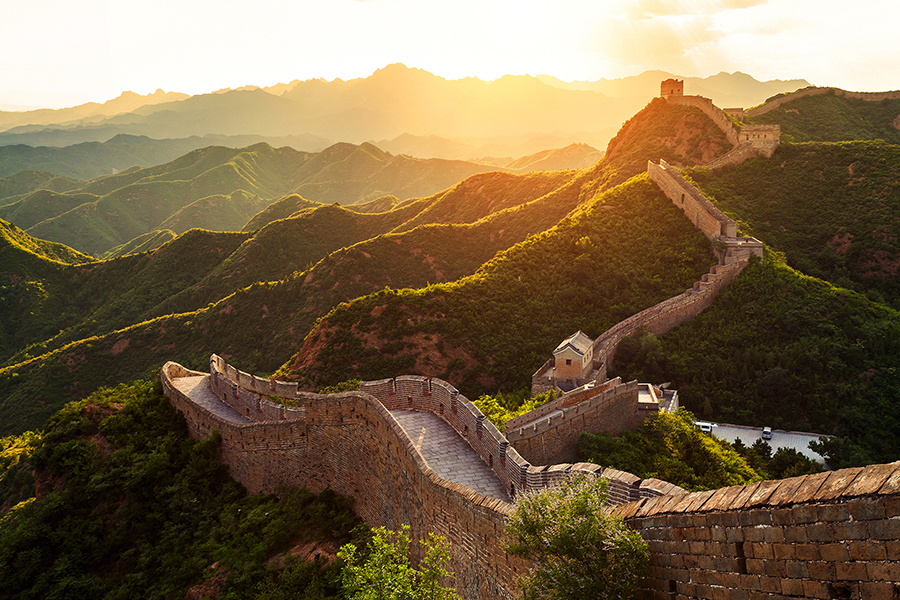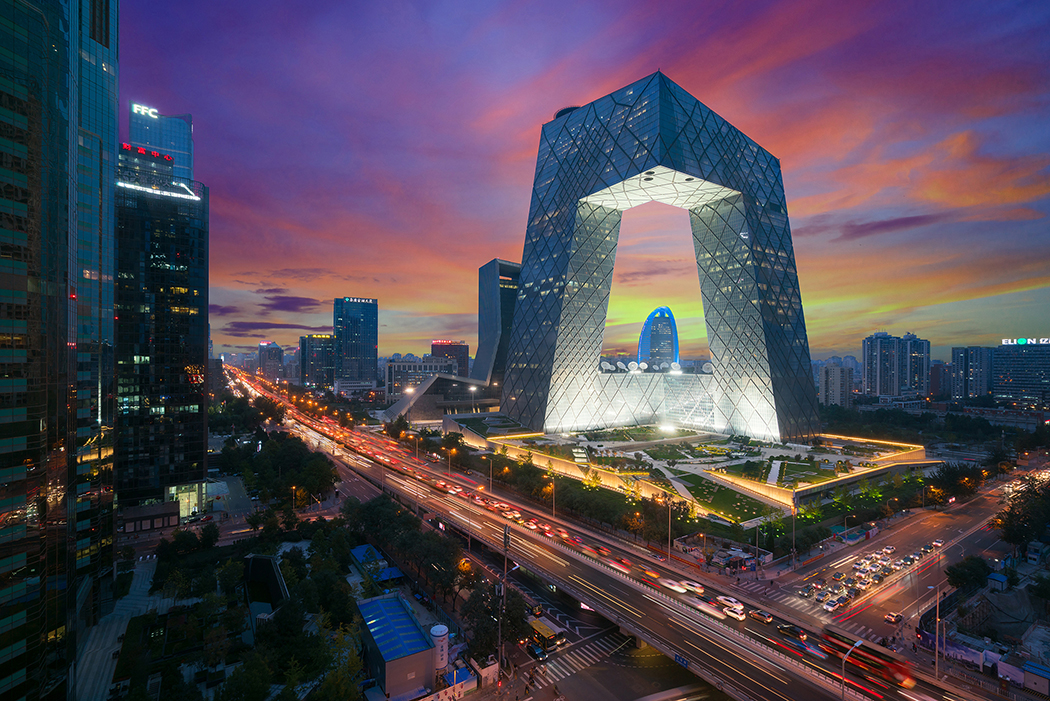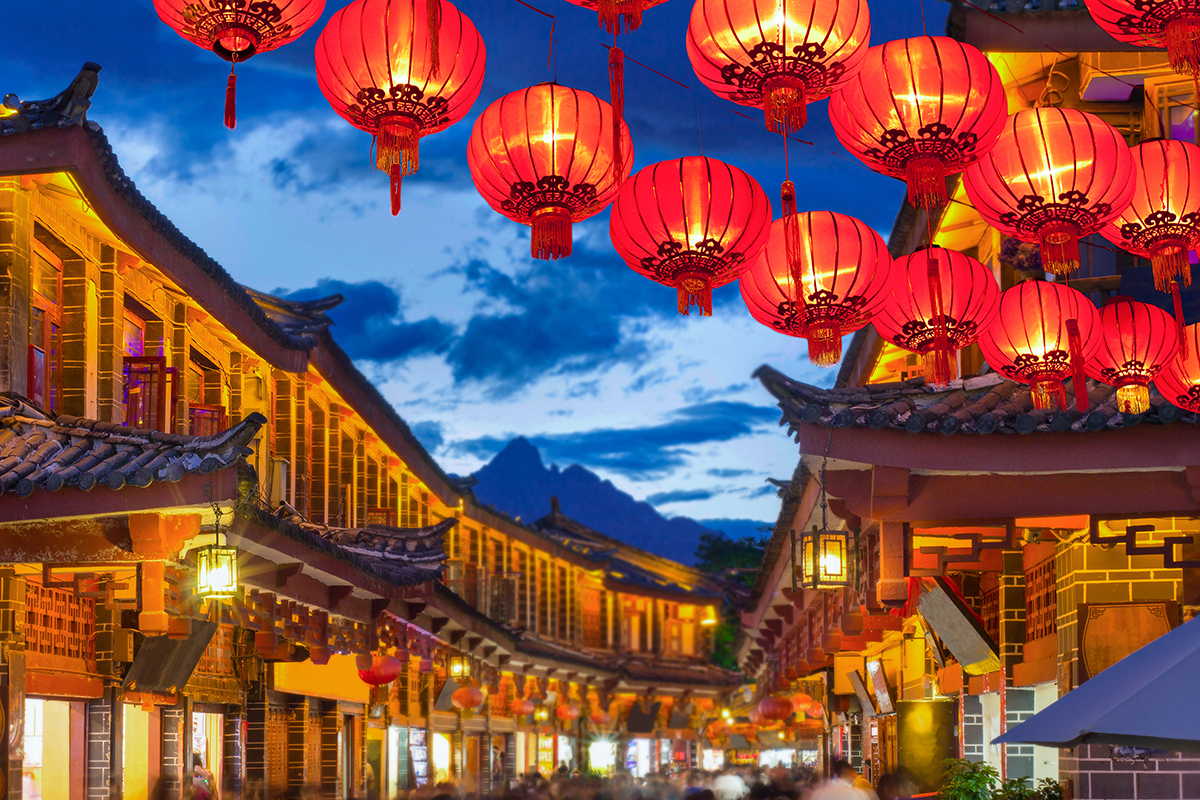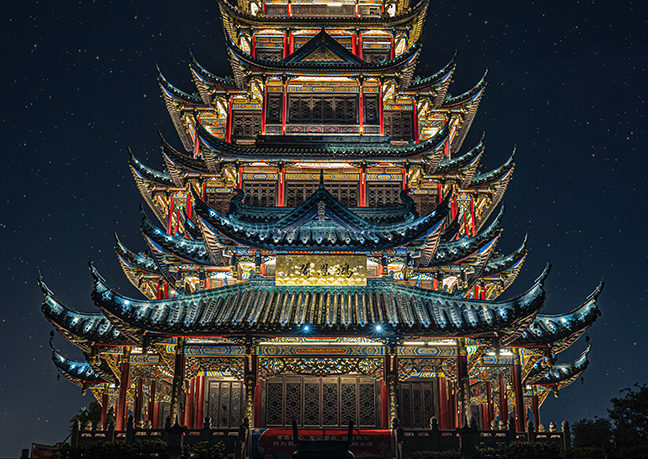The fourth most visited country in the world, China is rich in history, culture, and natural wonders. Enjoy a holiday full of activities, endless possibilities, attractions, and unforgettable experiences in China.
The most populous country, with a population of around 1.4 billion, China is also the world’s third-largest country. One of the first civilizations in the world, the history of China goes back several millennia. The rich cultural tapestry of China is woven from the legacy of centuries of monarchies, dynasties, and various heritage traditions. This legacy is reflected in the country’s cultural landmarks, ancient architecture such as the Great Wall of China, which invites visitors to immerse themselves in an outstanding realm.

China is also the third-most biodiverse country in the world, with a vast and diverse landscape housing over 34,687 species of animals and vascular plants. China stretches from the Gobi and Taklamakan deserts and cold coniferous forests in the arid north to subtropical forests in the south. China’s geography also encompasses great mountains such as the Himalayas, Henan valley, some of the longest rivers in the world. The Yangtze is the third-longest river, and the Yellow River is the sixth-longest river in the world.
The cold coniferous forests are home to species such as the elk and the Asian black bear, and over 120 bird species. In contrast, the subtropical forests in central and southern China are home to a high density of plant species, including rare endemics. The tropical and seasonal rainforests of Yunnan and the Hainan Islands contain a quarter of all animal and plant species found in China.
The emphasis on cultural sophistication in China is reflected in the belief that calligraphy, poetry, and painting were higher art forms compared to dance or drama. This belief has influenced all Chinese artists over the centuries and nowadays. Some of the greatest artworks found today are a result of ancient Chinese culture.
The Chinese culture has long emphasized a sense of deep history and a largely inward-looking national perspective. Examinations and a culture of merit remain greatly valued in China today.
In 2010, China received 55.7 million foreign visitors. In 2012, it was the third-most visited country in the world. There is also a large volume of domestic tourism. In October 2012, an estimated 740 million Chinese holidaymakers traveled within the country. China is home to the world’s largest number of UNESCO World Heritage Sites (55) and is the first tourist destination in the Asia-Pacific region. Euromonitor International has estimated that China will become the world’s most popular destination for tourists by 2030.

Bilateral Relations
The bilateral relations between China and Saudi Arabia are rooted in the past, as both societies and cultures were among the earliest civilizations on their continents. However, diplomatic relations were established in 1990. On July 21, 1990, H.E. Qian Qichen, Foreign Minister of China paid a visit to Riyadh and signed the Communiqué on the Establishment of Diplomatic Relations between China and Saudi Arabia with Prince Saud bin Faisal, Minister of Foreign Affairs of Saudi Arabia. The Chinese Embassy of China in Riyadh was established the next day.
In 1999, Chinese President Jiang Zemin became the first Chinese head of state to visit Saudi Arabia, where Strategic Oil Cooperation Agreement was signed. An agreement was reached that China will open its refining sector to Saudi Arabia. In turn, Saudi Arabia has been expected to provide Chinese investors with exploration and development opportunities.
In the 2000s, the bilateral diplomatic and economic relations expanded to a more robust and solid collaboration. In 2004, Saudi Arabia and China initiated a series of regular political meetings, and Sinopec (China’s state-run oil company) signed an agreement to explore gas in the Empty Quarter (Rub’ al Khali) in Saudi Arabia. In December 2005, China and the Organization of Petroleum Exporting Countries (OPEC) held their first formal talks.
In January 2006, King Abdullah became the first Saudi monarch to visit China. During this state visit, King Abdullah signed five significant agreements on energy cooperation. The visit became an opportunity to discuss broader economic trade, taxation, technical agreements, and a vocational training agreement. In addition, a loan for urban development in China’s Xinjiang province was confirmed by the Saudi Development Bank.
These state visits by the Saudi and Chinese leaders have been continuous. Thus, in February 2019, the Saudi Crown Prince, Mohammed bin Salman, made a state visit to China, where he met the Chinese President Xi Jinping. Crown Prince Mohammed also met the Chinese Prime Minister and the Minister of Foreign Affairs, and government representatives.
During this state visit, the parties agreed to strengthen stable commercial ties between the two countries. In addition, the parties expressed their willingness to cooperate within the framework of national strategic plans: the Chinese Belt and Road Initiative and Saudi Vision 2030. The two parties signed a cooperation agreement to enhance research and studies in the maritime transport industry. Crown Prince Mohammed bin Salman agreed to allocate $10 billion to establish a refining and petrochemical complex in China. On the sidelines of the visit, the Crown Prince expressed Saudi readiness to teach Chinese in Saudi schools and universities.
In 2020, Saudi imports from China amounted to $28.1 billion, while China is the main destination for Saudi exports (SAR 6.693 million). In April 2020, China and Saudi Arabia signed an SAR 995 million ($ 265.29 million) deal to fight COVID-19, providing 9 million nucleic acid tests for Saudi Arabia and opening laboratories in six main areas of the Kingdom.
“The saying ‘a friend in need is a friend indeed’ has become the best footnote of the friendship between China and Saudi Arabia,” said Chinese ambassador Chen Weiqing to Arab News, reflecting on the bilateral relationship between Saudi Arabia and China. The ambassador stressed that relations between Saudi Arabia and China have strengthened since the outbreak of the COVID-19 pandemic.
This was reflected in the fact that the two countries offered strong support during global crisis. At a critical moment, as the Chinese people sought to win the battle against COVID-19, the Saudi government expressed support and offered assistance to China. Thus, in accordance with King Salman’s instructions, the King Salman Humanitarian Aid and Relief Center provided the Chinese government with much-needed medical supplies, which have become tremendous support for frontline Chinese healthcare workers and played a positive role in China’s effective control over the virus. In turn, China sent a team of medical experts to the Kingdom to support and assist in the fight against COVID-19. The ambassador noted that Chinese experts believe Saudi Arabia has the experience and is well prepared to deal with COVID-19 and control the pandemic.
Cooperation between the two countries has played a positive role in combating the pandemic and reducing the peak number of cases. China stands ready to maintain close cooperation with Saudi Arabia to prevent and overcome the pandemic.

Where To Go
The ancient village of Hongcun in Anhui province is 900-years-old and attracts visitors with its tranquil atmosphere, unique architecture and breathtaking mountain scenery. A place known to inspire artists, this village is picturesque and scenic in both art and life.
Mount Huangshan or Yellow Mountain in Anhui province is a UNESCO World Heritage Site, famous for its mysteriously shaped pines, spectacular rock formations, hot springs, and seas of misty clouds.
Huangguoshu Waterfall in Guizhou province is the highest waterfall in Asia, with its majestic views and breathtaking sceneries.
Fortress Towers in the Kaiping county in Guangdong province were built in the early 20th century by the famous Kaipingers, who brought many foreign architectural styles to China, including Islamic, Roman, and even Ancient Greek. The towers were built as a display of wealth and a practical way of protecting locals from war and theft. Nowadays, approximately 1,800 fortress towers stand amid Kaiping’s vast rice fields.
Yalong Bay in Hainan province is the best tropical setting in China. This 7.5-kilometer crescent beach is a perfect getaway and a paradise for water sports enthusiasts, including surfers who sometimes ride small waves all day.

What To Do
Mount Wuyi in Fujian Province is a UNESCO World Heritage Site. Bamboo raft drifting in the Nine Bend River (lower gorge) is a popular activity among visitors. The two-hour, eight-kilometer trips provide great views of Mount Wuyi.
Relax at the Chengde Mountain Resort or Rehe Palace in Hebei, another UNESCO World Heritage Site, once a summer palace used by Qing Dynasty emperors on holiday. Great serene gardens and a 70-meter pagoda have persevered to this day. Lush grasslands, marvelous mountains, and tranquil valleys keep this place cool to escape the heat.
Chinese art and literature lovers can marvel at the stilted houses in Fenghuang. Every year, armies of young backpackers flock to the ancient town, for its rich Miao and Tujia ethnic culture.
Cruise over the Heaven Lake in Jilin, a crystal-clear jade-like lake surrounded by 16 peaks of the Changbai Mountain National Reserve, near the border of North Korea. It is also a hotspot for fans of water monsters.
Discover a forest of stalactites and stalagmites at the Benxi Water Cave. Exploding with vibrant colors of green, yellow, and red, the cave was formed more than five million years ago.




